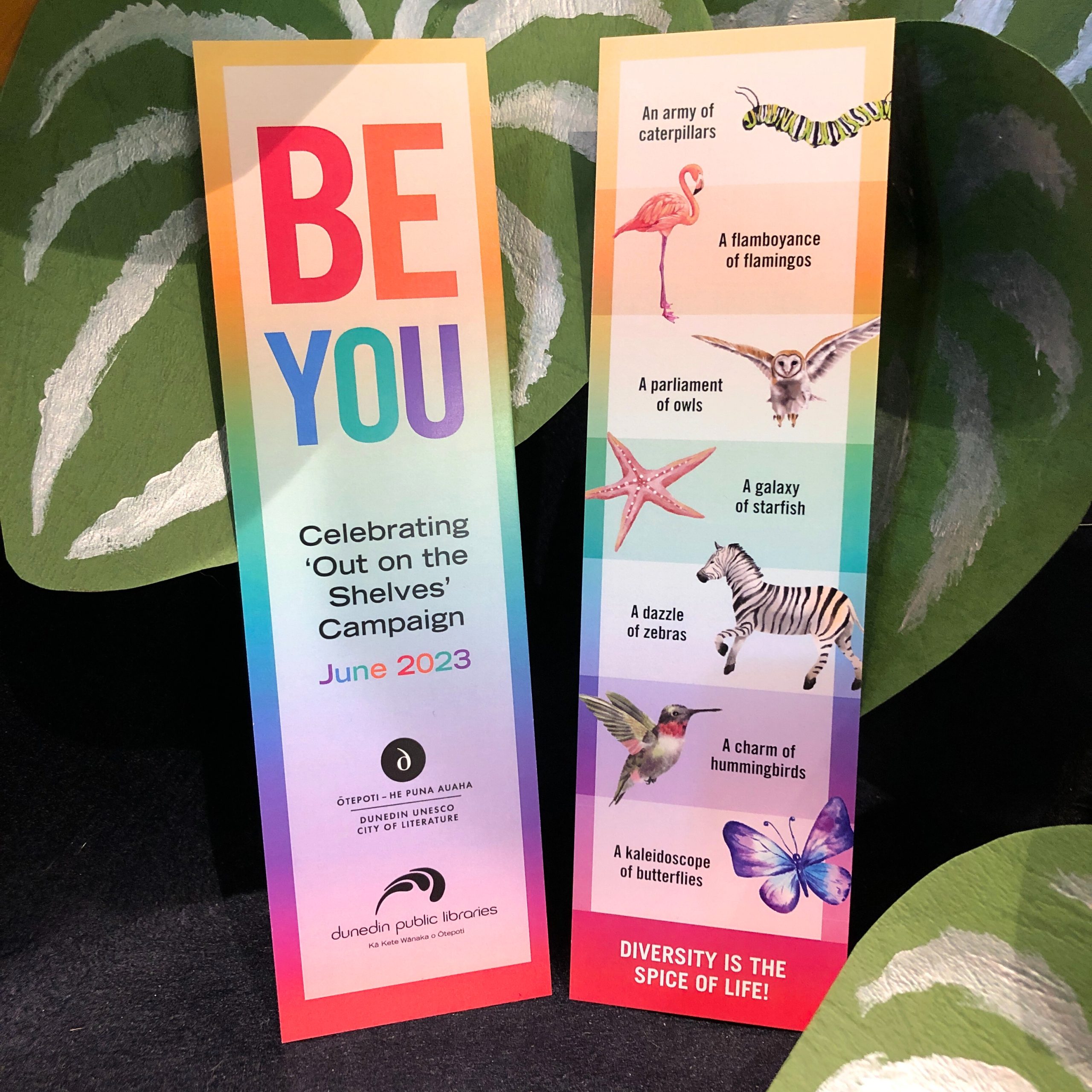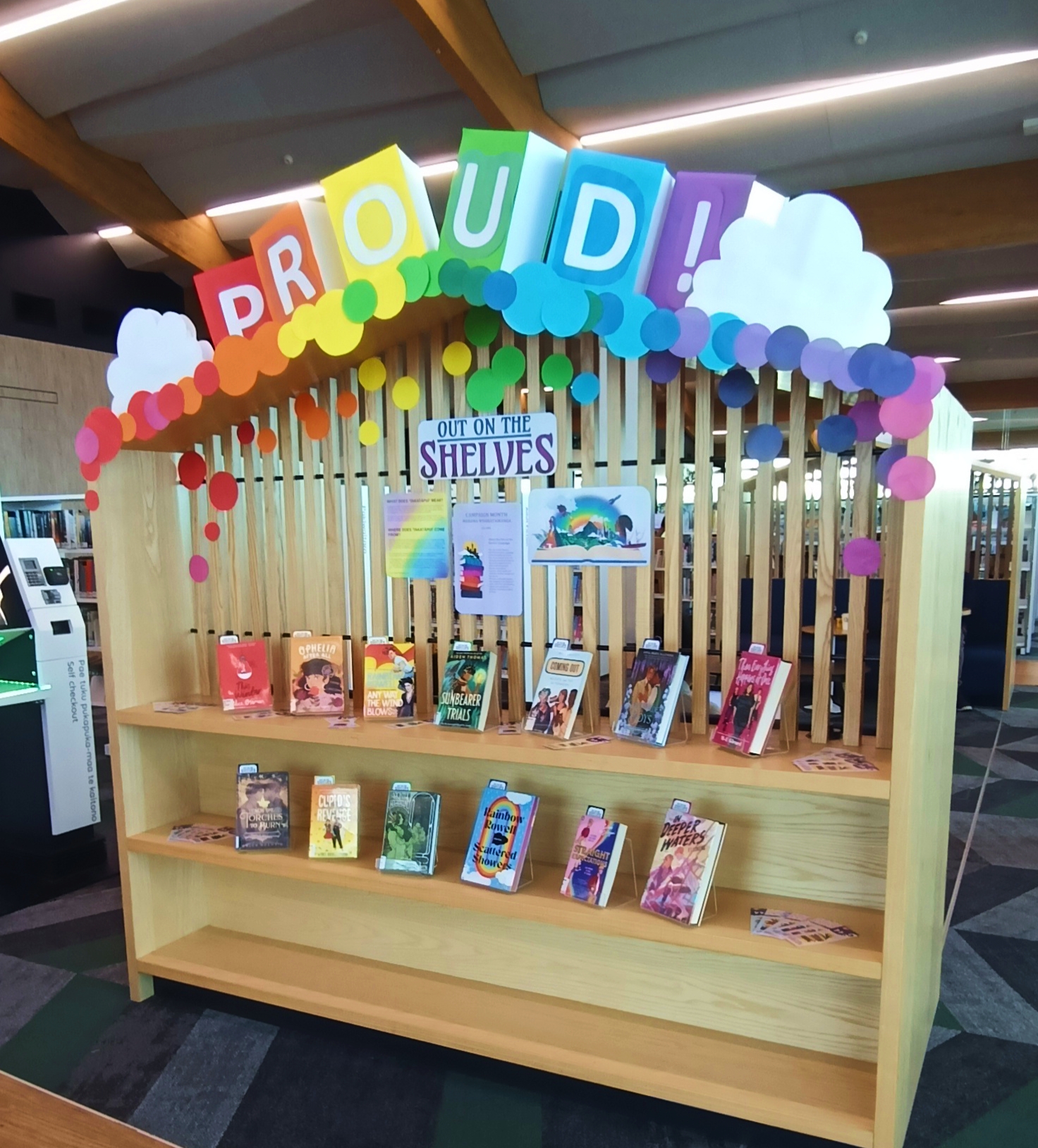Addressing Pushback
Support and information for school and community libraries

Why access to representation matters
Including rainbow books for young people is part of building an inclusive collection at your library. Just as an intersection of books about different cultures, religions, and backgrounds builds a stronger collection, so do books about rainbow young people.
It is vital for all youth to have access to age-appropriate, positive representations of rainbow identities. According to the Youth19 study from The University of Auckland:
- 16% of young people identify with a minority sexuality or are questioning their sexuality.
- 1.6% of young people identify with a minority gender or are questioning their gender identity.
Lack of access and visibility of such material can cause rainbow youth to feel isolated and depressed.
Increasing the visibility of rainbow resources that feature positive, affirming representations across gender, sexuality, race and culture are vital for all young people and ensure they have healthy, respectful friendships and relationships.
Out on the Shelves features books for all age ranges-from Children’s Picture Book through to Young Adult. Rainbow content is not inherently any more “mature” or “adult” than non-rainbow content, and research proves that many rainbow young people are aware of their identities from a very young age. Young people seeing themselves represented in literature is an important part of healthy, mirroring development.
Further, presenting all young people with access to rainbow stories helps normalise differences for young people. This also has been shown to reduce bullying and have positive mental health and societal outcomes.
References
Some libraries and school libraries worry about push-back from parents or ‘concerned citizens’ in their communities. For school libraries, we suggest referencing the Ministry of Education’s Inclusive Education Guidelines on Supporting LGBTQIA+ Youth. For public libraries, please refer to your library’s mission statement (which often signal access for all) or IFLA documents.
All students deserve to see themselves reflected in the collections of libraries. Offering a wide variety of resources with authentic perspectives helps students understand themselves and their world.
For further information on the evidence behind creating an inclusive collection, please refer to this wonderful resource from the National Library.

Dunedin Public Libraries

Rototuna Library
Current Pushback Challenges
While Out on the Shelves is a celebration and acknowledgement of your communities rainbow members, this visibility may unfortunately bring with it increased rainbow-focussed violence.
This may include
- Hateful acts and speech.
- Harassment of library staff.
- Online abuse (e.g. emails, texts, social media etc.)
- Books being challenged.
- Complaints to the library and to school boards.
- Protests at Rainbow events.
- Vandalism of library books or library buildings or displays.
- Books and other items being stolen.
Aotearoa is not immune to the disturbing rise of transphobia and homophobia, and while we hope that you will not experience this, having a solid plan in place in case it is needed is an important step in keeping your rainbow communities and staff safe.
The Impact of Challenges and How to Respond
Our friends at Lianza have a super helpful toolkit on how to respond to these challenges below.
The visibility of Rainbow stories and experiences in books and libraries programmes provides this community a sense of acceptance and belonging.
It is important to understand that because Rainbow content, events, displays are about the identity of people, protests targeting them can be emotionally charged, and be traumatic for participants, staff and onlookers.
Library staff may feel unsafe, particularly those who identify as LGBTIQ+, and it is crucial that organisations have in place support mechanisms both in response to incidents, but also in preparation for them.
Event management should include careful planning of the event including risk mitigation, environmental scanning for supports and services, strengthening internal culture and allyship within teams to wrap around Rainbow kaimahi, and boundary holding as library kaimahi.
Be aware of titles or events that have been targeted for challenges or protests in other libraries and design displays and events with an eye for visibility by staff to discourage removal or vandalism or inappropriate behaviour. Purchase e-copies which can not be removed or vandalised by challengers.
Some libraries have provided workshops for staff to help them understand the experience of Rainbow community members and how to use affirmative or neutral language with customers about gender identity and pronouns for example.
Organisations can promote public campaigns about treating their staff with respect and kindness.
The impact can be even more significant for Takatāpui, Fa’afafine and Fakaleiti and other indigenous gender identities. Attacks by these groups can also intersect as an attack on their Māoritanga or ethnicity.
A good resource for librarians to understand these experiences and the intersections of homophobia, transphobia, and racism is: takatapui.nz
Many public libraries promote Pride Week as part of their wider organisation’s strategy and commitment to diversity.
Communications and media teams and senior managers can support libraries and staff and provide public statements, extra security, and work with community Pride organisations to design safe experiences.
Have key messages available such as:
“We try to have an inclusive collection which represents the diversity of our community. As such we hold a variety of different viewpoints and topics, respecting people’s right to freedom of information.”
“Our library exists to provide materials, services and information for all members of our community.”
Libraries as a Safe Space
From our Friends at Alphabet Book Club
Things to consider to ensure you are a safe place and/or adult for rainbow young people to come to.
- Do your library rules include respect for all visitors and are those rules posted where everyone can see them?
- Do you intervene when you see name calling or bullying?
- Does your collection include books and media with positive rainbow related themes for all age levels?
- Do you display books and hang posters with diverse faces and families?
- Do you ensure access to rainbow related content on the internet (you’d be surprised how many schools and libraries can’t access rainbow organisation websites)?
- Do you celebrate rainbow events?
- Are your library facilities safe and accessible for all, including transgender youth? (do you have gender neutral bathroom facilities?)
- Can you provide space for school or community rainbow groups to meet?

Chelsea and Theresa from
Alphabet Book Club
